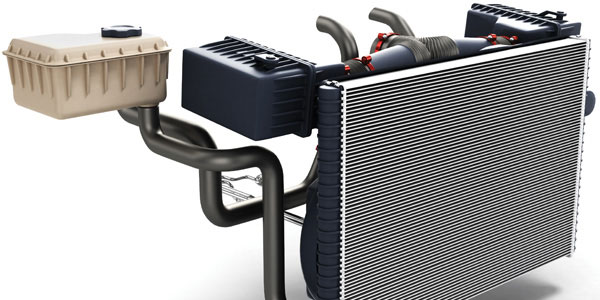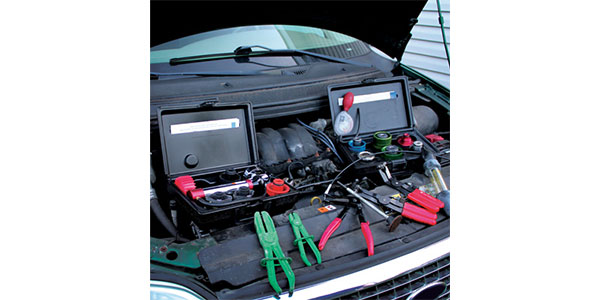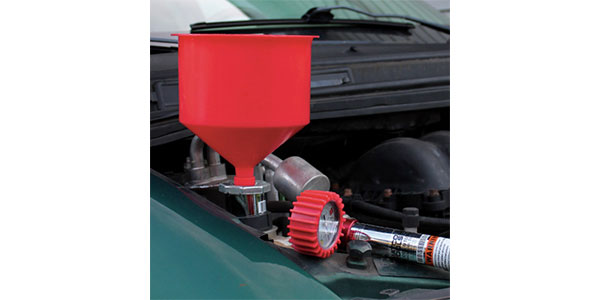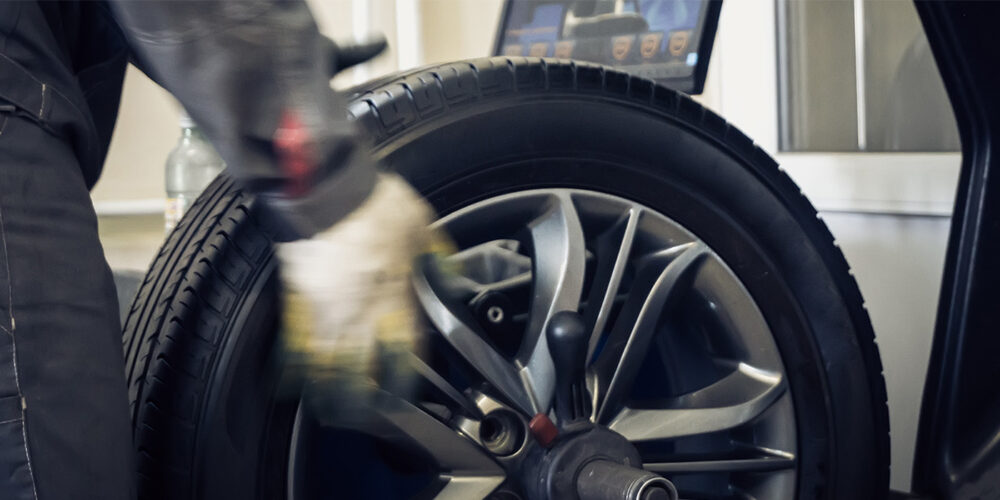
Successful diagnosis and repair of any vehicle system always requires a combination of experience, knowledge and the proper tools. Vehicle cooling systems are no exception and equipping yourself with the right tools will result in quick and accurate diagnosis, efficient repair and the bottom line — profit.
Before your next cooling system job comes in, check the concentration of your tool inventory against our list of favorites. These tools will help you get the job done and we’ve thrown some knowledge into the mix as well.
The Pressure Tester
What’s one of the most common cooling system complaints? Leaks, of course, and a pressure tester is the way to find them. Pressure testers can be hand pump or air powered for pressurizing the system, but regardless of what you have, the idea is simple: you must be able to pressurize the system in order to pinpoint leaks. Not only does this allow a visual inspection but monitoring the gauge for pressure drop over time lets you know if you need to keep looking.
A pressure tester will also allow you to check the radiator or reservoir cap to make sure it can hold the proper pressure on a system, and this vital component should never be overlooked. The pressure in a cooling system raises the boiling point of the coolant — a critical aspect of cooling system operation.
Radiator and Reservoir Cap Adapters
These are some of our favorite things. Long gone are the days of two or three different sizes of radiator necks and reservoir caps. Today, shapes and sizes vary by the dozens. Radiator cap adapters are the mechanical “interface” between your pressure tester and the cooling system, and the correct adapter offers an immediate and positive seal with the radiator or reservoir, meaning you can get down to the inspection without wasting any time.

Build your collection efficiently by starting with the most common makes and models you work on, and proactively add on as you can afford to by seeing what other techs use frequently. You’ll find they are worth their weight in gold.
Antifreeze Hydrometer
An antifreeze hydrometer is used to check coolant concentration. We often think of this measurement as freeze protection; in reality it’s the coolant concentration we are checking. It’s critical of course that it doesn’t freeze, but the ratio of antifreeze to water affects more than just the freeze protection. It also affects the coolant’s ability to transfer heat (water does a better job than antifreeze so the correct mix gives you freeze protection and the best heat transfer for your climate), plus antifreeze will boost the boiling point of water and we can’t forget the corrosion-inhibitors and additives that protect the components of the cooling system.
Most hydrometers are of a basic suction-bulb design with balls or a pointer that floats to give you a reading. They are nice because we also get a sample of the coolant, which gives a good visual of its condition. While the majority of the time they are sufficient for what we do, there is an important factor not to overlook. Hydrometers work by measuring the specific gravity of the coolant, and skipping the scientific part, they hold a certain degree of inaccuracy.
A refractometer is a tool that measures the refractive index of light passing through a sample of fluid. These are becoming much more popular and recommended by many OEMs due to their accuracy. While more expensive, both ethylene glycol and propylene glycol can be measured with extreme accuracy due to the science behind how they work.
Block Tester
Also known as a combustion leak tester, a block tester is nothing short of invaluable. The simple fact is, if combustion gasses are present in the cooling system, there’s a problem. The symptoms can exhibit themselves as either cooling system or driveability problems; they may be obvious or they could be intermittent and unknown to the customer.
Regardless, combustion gasses in the cooling system mean a bad head gasket at the very least, and the main point here is that a block tester will tell you. They are very sensitive and offer dependable results. They work by drawing a vapor sample off the cooling system through the fluid in the block tester. The fluid will change color — or not change, depending if there is a problem and how severe. Block testers are a must-have in our book and once you start to use one for diagnosis or even routine inspection, you’ll be reaching for it all the time.
Fin Comb
Sometimes left out with the thinking that a pocket screwdriver will do the same thing, a fin comb will gently and evenly straighten bent radiator or condenser fins to keep the cooling system at 100% efficiency. Most fin combs have multiple sides to cover the majority of fin spacings, and they perform the job without the sharp edges or potential for damage associated with a screwdriver.
Along the same lines is a tool called an “air comb.” These are actually extended-length air nozzles that are available anywhere from 12-in. up to 48-in. long. They have holes drilled all the way along them and work by slipping them down between a radiator and condenser to blow out any dirt across the entire surface.
Spill-Free Funnels

These funnels adapt to most radiator openings and immediately transform a small hole to a big one, so when filling you can keep the coolant in the car and off the floor. Not only do they keep things clean, but they also allow room for expansion when the engine is running, allowing air to bleed while you monitor for thermostat operation. They also work great as a “staging” area to draw vapor for a block test. Finally, they have a stopper so they can be removed without spilling the remaining coolant. Simple, efficient, useful.
Cooling System Vacuum Fillers
Pick a year, any year as long as it’s 1965, and there’s a good bet the car you’re working on has an upper and lower radiator hose, two heater hoses and a radiator cap that’s the high point in the system. Fill it, run it and go.
But this is 2019, and modern cooling systems are complex, with bleeding and trapped air pockets topping the list of difficult service items. Vacuum fillers, also referred to as air purge kits, draw a vacuum on the system then fill it in a matter of seconds, effectively eliminating air pockets, saving time and frustration. You can also monitor the vacuum to check for leaks before filling. You can’t go wrong here.
Hose Clamp Pliers
Got constant tension clamps? You’ll be lost without these pliers. It’s also nice to have a few different pairs — straight, angle and remote cable operated — so you can access the more difficult locations. Constant tension clamps (sometimes called spring clamps) have proven themselves in many ways and they are here to stay.
Hose Pinch Pliers
Designed to pinch off a rubber hose without damage, these will be one of your more common cooling system tools. They are available in a variety of sizes and angles for different hoses and tight spots. We like the brightly colored ones, so they don’t accidentally get left on a hose or left under the hood.
Coolant Barrier/Coolant Guard Testers
Change a cooling system component without draining the coolant? Sounds too good to be true, but it’s a reality with these tools that draw a light vacuum on the system and keep the coolant in place as you do your work. They also can be used for pressure testing the system when done; a win-win situation.
Thermostat Gasket Cleaner
Quite possibly the best thing since sliced bread, these are simply an extended-reach bit for your die grinder that holds your twist-loc cleaning discs. The length allows you to get down in to access the thermostat mounting surface and they have a floating guide shaft so you can control it and move it around with your free hand while it is spinning. Believe us when we say you’ll use this all the time, and for a lot more than just thermostat gaskets.
Hose Picks/Hose Removal Tools
We’ll finish up here with the solution to a common problem: hoses that are stuck onto a water neck. This seemingly concrete bond can be broken by slipping one of these in between the hose and the neck, then guiding it around the circumference. Tugging on hoses can weaken and tear them, plus weaken or break a plastic water neck. This gentle solution saves time and damaged components. You can also get circular-shaped pliers that grip the outside of a hose and allow you to simply rock it back and forth to break the bond.
If you have a favorite cooling system tool or any service tips or tricks, drop me a note at [email protected].













